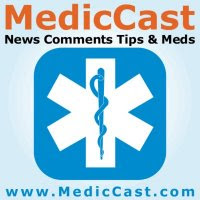
At EMS Today, I appeared on the MedicCast with Jamie Davis, Tom Bouthillet, and Dana Yost.
Improving Cardiac Arrest Survival, and Provider Performance Episode 259.
–
Some of the topics –
Can we improve what we do if we do not measure what we do?
What can we do to improve our resuscitation rates?
What can we do to improve the quality of our resuscitation attempts?
What can we do to make our codes run more smoothly?
Should waveform capnography be mandatory?
If we want to improve quality, should we treat what we want to improve as a sentinel event?
–
Who is Dana Yost and why was he there?
Dana is from Redmond Fire Department in King County, Washington. This is where you have to go to find the highest resuscitation rates in the US, so who better to talk about improving resuscitation rates?
–
Tom challenged me to compete against the automated compression devices, but I forgot all about it. There was a lot going on and I did not visit the booths to check out any of the equipment. I was just talking with people between episodes of the podcasts I appeared on.
I am not John Henry, but I do not think that we should assume that machines perform CPR better than well trained people. These devices may perform compressions more consistently, but is the quality consistently good?
One of the problems with these devices is that they make it easier to justify transporting patients with CPR in progress, rather than doing what is right for the patient.
.



.jpg)


Subscribe to RogueMedic.com